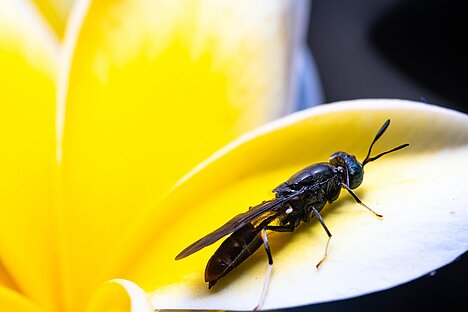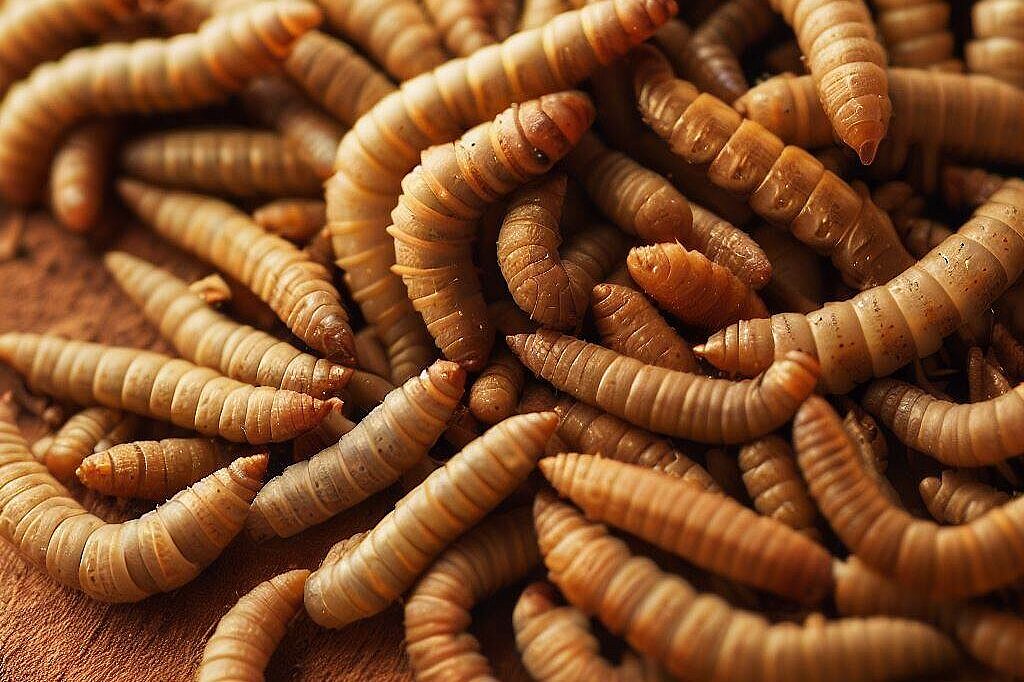Hermetia larvae

You may have heard of Hermetia larvae, but do you know what they are and whether they are good for your dog? This article will tell you everything you need to know about this unusual ingredient.
What are Hermetia larvae?
Hermetia larvae are the larvae of the black soldier fly (Hermetia illucens), which is found in the tropics and subtropics. The flies lay their eggs on organic waste, which is eaten by the larvae. The larvae are rich in proteins and fats and are therefore used as an alternative animal feed.
How are Hermetia larvae processed?
Hermetia larvae are bred and harvested in special facilities. Care is taken to ensure that the larvae are healthy and hygienic. The larvae are then dried or processed into flour, which can be used as an ingredient in dog food. There is also dog food that contains whole larvae.
What are the benefits of Hermetia larvae for dogs?
Hermetia larvae have several benefits for dogs that make them an interesting alternative to conventional protein sources. Firstly, Hermetia larvae are hypoallergenic, which means that they do not trigger allergic reactions. This is particularly beneficial for dogs with food allergies or intolerances. Secondly, Hermetia larvae are sustainable, as they are obtained from waste and use fewer resources than other animal products. This is good for the environment and animal welfare. In addition, Hermetia larvae contain important nutrients such as amino acids, minerals and vitamins, which are important for the health and well-being of the dog.
What are the disadvantages of Hermetia larvae for dogs?
Hermetia larvae also have some disadvantages for dogs that you should consider. For one, Hermetia larvae are relatively new to the market and there aren't many studies on their long-term effects on dogs yet. Therefore, you should consult your veterinarian before feeding Hermetia larvae to your dog. Also, Hermetia larvae may have an unpleasant odor or taste that your dog may not like. This may cause your dog to refuse food or eat less. Hermetia larvae can also be more expensive than other protein sources, depending on the supplier and quality.
Hermetia larvae are an alternative protein source for dogs that has some advantages, but also some disadvantages. They are hypoallergenic, sustainable and nutritious, but also new, odorous and expensive. Whether or not you feed your dog Hermetia larvae depends on your preferences and those of your dog.
If you notice any signs of hypersensitivity or poisoning in your dog, you should see your vet immediately. We are not a substitute for a vet, but we try to be as accurate as possible. Every dog reacts differently and we recommend you get a second opinion or consult your vet if in doubt.
Stay healthy and take good care of your four-legged friend!😊
Similar to Hermetia larvae
Mealworms are the larvae of mealworms. They are mainly used as food for reptiles, birds and fish, but are also increasingly used as an ingredient in dog food and snacks. Mealworms can be fed both...
Crickets (Acheta domesticus) are small insects that are bred in many parts of the world as food for pets such as reptiles, fish and birds. They are known for their characteristic song, which the...
The silkworm moth (Bombyx mori) is a domesticated species of butterfly that is bred primarily for the production of silk. The larvae of the silkworm moth, often referred to as silkworms, feed...
Wax moth larvae are the larval stages of the wax moth, a butterfly known primarily for its preference for beeswax. These larvae feed on beeswax, pollen and honey in beehives, making them a problem...



